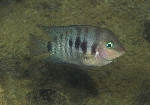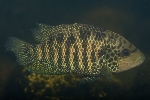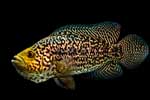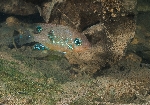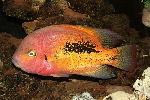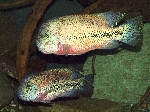
Temporal diversification of Central American
By Hulsey, Darrin C, P.R. Hollingsworth Jr., J.A. Fordyce
BMC Evolutionary Biology, 10(279):12 14-Sep-2010
" Background: Cichlid fishes are classic examples of adaptive radiation because of their putative tendency to explosively diversify after invading novel environments. To examine whether ecological opportunity increased diversification (speciation minus extinction) early in a species-rich cichlid radiation, we determined if Heroine cichlids experienced a burst of diversification following their invasion of Central America.
Results: We first reconstructed the Heroine phylogeny and determined the basal node to use as the root of Central American Heroine diversification. We then examined the influence of incomplete taxon sampling on this group’s diversification patterns. First, we added missing species randomly to the phylogeny and assessed deviations from a constant rate of lineage accumulation. Using a range of species numbers, we failed to recover significant deviations from a pure-birth process and found little support for an early burst of diversification. Then, we examined patterns of lineage accumulation as nodes were increasingly truncated. We assumed that as we removed more recently diverged lineages that sampling would become more complete thereby increasing the power to detect deviations from a pure-birth model. However, truncation of nodes provided even less support for an early burst of diversification.
Conclusions: Contrary to expectations, our analyses suggest Heroine cichlids did not undergo a burst of diversification when they invaded from South America. Throughout their history in Central America, Heroine cichlids appear to have diversified at a constant rate "
Classification: Taxonomy and phylogeny.
Language: English
Reference in bibliography for species (10)
Name substitutions
- Mayaheros beani referred to as Cichlasoma beani [p. 3].
Hulsey, Darrin C & P.R. Hollingsworth Jr., J.A. Fordyce. 2010. "Temporal diversification of Central American". BMC Evolutionary Biology. 10(279):12 (ffm02702) (abstract)
